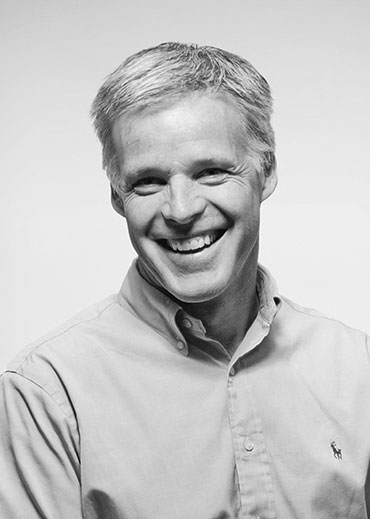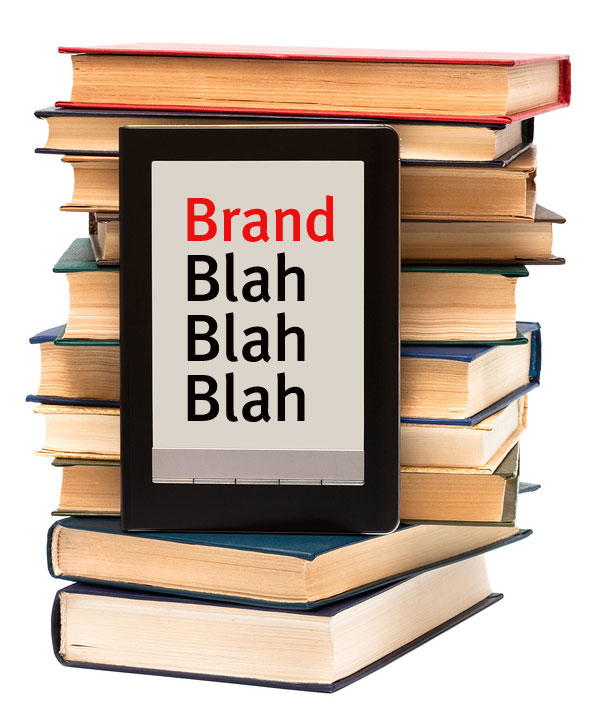Books, it seems, are the ultimate business currency in a content-saturated world, and nowhere more so than branding. They attract speaking engagements, invite press and blog mentions and sometimes even sell a few copies. A cursory search of Amazon.com reveals that (at this writing) there are more than 14,000 books related to the business of brands. But is there really anything new enough under the marketing sun to justify yet another title? I decided to talk to Steve McKee, head of one of America’s leading small agencies McKee Wallwork, about his forthcoming book, Power Branding, and the state of the brand building art.
Brandingmag: First of all, what are your definitions of a brand and branding?
Steve McKee: Great first question, because there are as many definitions of branding as there are so-called branding experts. At its core, I believe a brand is a marker of meaning. With respect to a business, its “brand” is the sum total of everything it does – not merely its marketing efforts, but its products, services, pricing, distribution strategy – you name it. In that sense, “branding” is nothing more nor less than “doing business.” That’s a pretty expansive view, but I don’t know where else to draw the line – all that a business does adds up to what its brand means in the eyes of consumers, employees and other key constituencies.
And few people realize this (especially in the C-suite), but a brand is the ultimate corporate asset, because it’s the only asset that need never depreciate. Buildings age, roofs leak, IP expires—every other form of asset depreciates over time, but a brand never needs to. (Note that I didn’t say they never do depreciate. Brands go up and down in value all the time. But they never need depreciate, properly managed.)
A brand is the ultimate corporate asset, because it’s the only asset that need never depreciate.
BM: A simple search for “branding” on Amazon yields nearly 14,000 titles – so why do we need another book on the subject?
SM: Two reasons. One, because branding is so misunderstood, underutilized and abused. As much as they can try to teach you about the principles of branding in business school, effective branding is more caught than taught. The best way I’ve learned through the course of my career has been by looking at the best brands and brand campaigns and trying to figure out why they did what they did. Once you get into the habit of doing that, you can almost always unearth a principle that you can apply to your brand. That’s why I expect Power Branding to be so helpful – dozens of real world lessons and insights, all in one place.
Second, basic economics. Supply and demand tend to find equilibrium over time. There wouldn’t be so many branding titles if the demand wasn’t there.
BM: Your publisher touts the book as the answer to “How small and mid-sized business leaders can instantly improve their own marketing efforts and grow their businesses by applying the same business strategies from leading brands.” Is “instantly” just publisher hyperbole, or do you see something(s) new afoot that actually enables extremely rapid brand development and success?
SM: Hyperbole? From a guy trying to sell books? Never! Seriously though, while I don’t see something new afoot (fundamental principles of branding have always been and will always be true) I do see that if somebody takes my advice to heart they can, indeed, see rapid improvement in accomplishing their branding objectives – the only caveat being that one of the core principles of Power Branding is maintaining consistency over time; brands are not created overnight. You know, once algebra clicks in someone’s mind they can all of a sudden solve for X anywhere, just like learning to ride a bike is hard until you figure it out—at which point it becomes easy (and fun). Understanding branding is much the same. Once you get it, you get it. And that makes all the difference.
Fundamental principles of branding have always been and will always be true.
BM: Speaking of what new forces in branding might now be at play, what do you see as the major changes in branding over the course of your own career?
SM: The biggest change is the increasing sophistication of the consumer. Those of us who grew up in the media age (and our kids even more so) are really, really good at filtering out messages we don’t want to pay attention to. We’ve had to become so, because we’re so bombarded with appeals for our attention every day. Second, and related, is the increasing power consumers have to talk back to (and about) brands. They can get their voices amplified pretty quickly, so the margin for error for any brand is smaller. I don’t know if these are new forces, but they are certainly accelerating forces. Kind [of] like NFL (the National Football League in the U.S.) players getting bigger, stronger and faster every year – the game hasn’t changed, but the changing players makes the game more dangerous (and fun to watch, by the way).
BM: Power Branding, if one takes the title as a category, implies its opposite… Weak Branding. Do you agree with those who say the rise of user-controlled media, the drop in brand message believability (as tracked by Edelman and Nielsen, for instance), the fractured media landscape, etc. has weakened marketers’ ability to self-determine a brand position and powerfully push a brand agenda?
SM: Weakened? No. But it has sharpened the need for marketers to develop brands that are true, credible and authentic. You can’t fake it anymore—but if it’s real, you can push it more powerfully than ever.
You can’t fake it anymore—but if it’s real, you can push it more powerfully than ever.
BM: According to that publisher’s blurb, the book includes a slew of case histories, including one from Coca-Cola. As they are a leading proponent of content as a core brand strategy, with their Coca-Cola Content 2020 Vision – what do you see as the requisite future balance of the pull of value-delivering content versus the push of marketer-message-driven mass marketing?
SM: I don’t see a distinction. As I say in the book, advertising isn’t about your brand, it’s an extension of it. Ads have always been value-delivering content – we just didn’t think of them that way. There are more platforms now and many more ways to deliver content, but great branding has never been about “pushing” anything on people. It’s always been about creating two-way engagement.
Advertising isn’t about your brand, it’s an extension of it.
BM: What are 2-3 branding books that you admire.
SM: The Bible is #1. I kid you not. It’s the best way to learn about human nature, how the world works, why people do what they do and what we all need. Studying it has made a huge difference in my secular, commercial advertising career. Ageless wisdom. Beyond that, Trout & Ries get it perhaps better than anyone, and all of their books riff on the same truths. They tend to get dismissed by MBA-types, but truth is truth. I’m also a fan of Ted Levitt’s classic The Marketing Imagination and Thomas Sowell’s Basic Economics. You can’t do good branding if you don’t understand economics, and we as a nation are woefully weak in that arena. I am also kind [of] partial to When Growth Stalls by yours truly. Some pretty groundbreaking insights in there, if I do say so myself.
BM: What did I forget to ask that I should have?
SM: Where people can pre-order Power Branding: www.powerbrandingbook.com
A question to all readers: What are your favorite books on branding?

